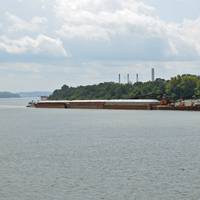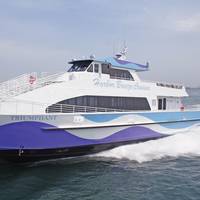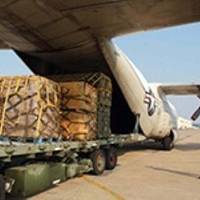Expect the Unexpected on the Inland Waterways

Among transportation planners, “resilience”, describing the ability to bounce back from adversities, both economic and other, has become a top consideration as we increasingly must “expect the unexpected.” The U.S. waterway system, covering the network of inland rivers and coastwise waterways, has seen a mix of good and not so good. As the 2020-2021 pandemic moves toward winding down, a recovery from the dismal 2020 is underway, but activity on the rivers is uneven. Ken Eriksen…
Short Seas in the Long Run

Building for the possibility of shortsea shipping involves many variables. The novel concept of rebirthing short sea shipping into what it once was or could be, may remain just that, a novelty. It would be paramount to overcome the “my way, on my terms” philosophy that so heavily drives traffic away from the seas and inland waterways and onto asphalt freeways that cannibalize natural resources. The plight of road warriors may even further drive coastal commuting straight into Davy’s Locker with the rapidly expanding development of non-marine-use shore side infrastructure.
Navy Movers to Gain From New ONR Transportation Tool

In a significant advance for military transportation, a new web-based tool sponsored by the Office of Naval Research (ONR) brings an Expedia-like search capability to Navy planners looking to move personnel or equipment around the world quickly and affordably. The Transportation Exploitation Tool (TET) is software that allows transportation planners to easily find available space among the thousands of military and commercial flights, and ship movements, that take place each day.
Marine Highways RFP for Cost-Savings Calculator
In 2009/2010, the Marine Highways Cooperative (MHC) conducted an MPO Information Needs Study. Based on this research, the MHC wishes to contract services to develop a user-friendly online calculator to help transportation planners determine the public benefits of new or expanded marine highway services. Specifically, the MHC wishes to determine the annual cost savings in congestion, pollution, infrastructure development & maintenance, energy (fuel), and highway safety improvements over the first five years for new or expanded marine highway services. You can request the RFP from Richard Lolich, MHC Program Administrator by emailing [email protected]. The MHC requests interested entities to submit questions by August 15, 2010.
Annual Harbor Safety Committee Conference
The U.S. Coast Guard's Office of Waterways Management is sponsoring the 11th Annual Harbor Safety Committee Conference in Tampa, Fla., at the Marriott Tampa Waterside Hotel May 27-29. The event aims to bring together dozens of harbor safety committees from around the country to continue improving communication, collaboration and coordination among policy makers, transportation planners, shippers and others in the maritime industry. The deadline for registration is April 15. Invited speakers include Rep. Elijah Cummings (D-Md.), U.S. Coast Guard Commandant Admiral Thad Allen, Carnival Cruise Lines Vice President Brendan Corrigan and senior officials from the U.S. Department of Transportation, the Maritime Administration, the U.S.
U.S. Shipbuilding Industry: A Bright Future Tempered with Challenges
Not since the heady days of the late 1970s has the outlook for shipbuilding in U.S. yards looked brighter, but that outlook is tempered somewhat by the threat of federal budget cuts that could jeopardize many present and future shipbuilding projects. The U.S.'s decision to unilaterally eliminate construction differential subsidies and end tax credits for vessel construction in the early 1980s resulted in 15 years of stagnation, retrenchment and consolidation for the domestic shipbuilding industry. Today the domestic shipyard industrial base in terms of employment, active facilities and building berths/dry docks is approximately half as large as it was in 1981.





